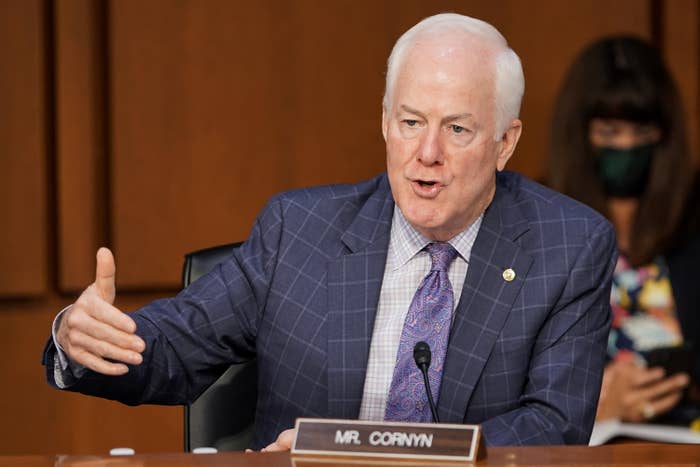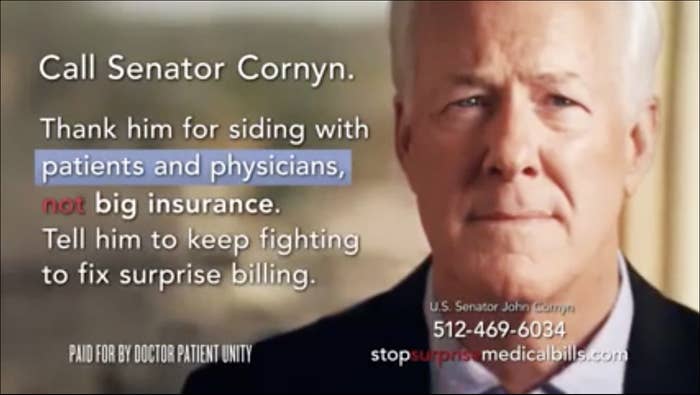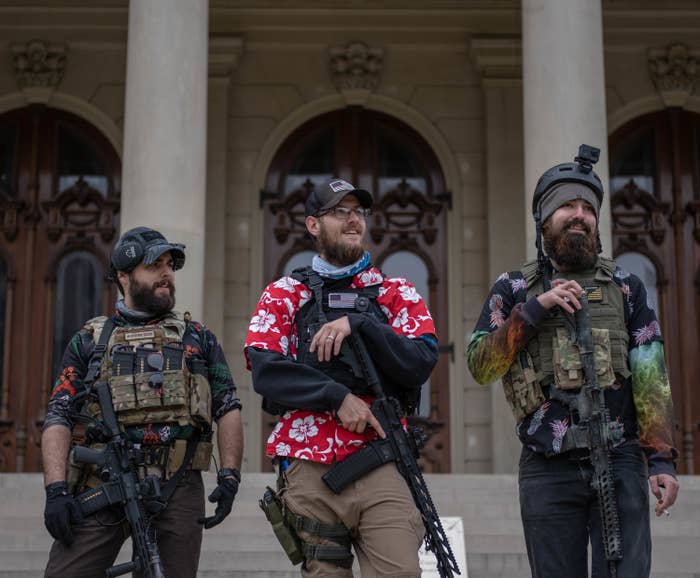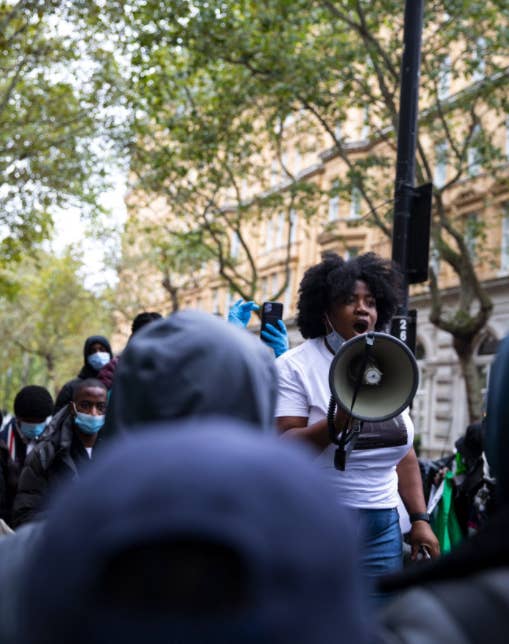By Sara Ashley O'Brien, CNN Business
Updated Fri October 23, 2020
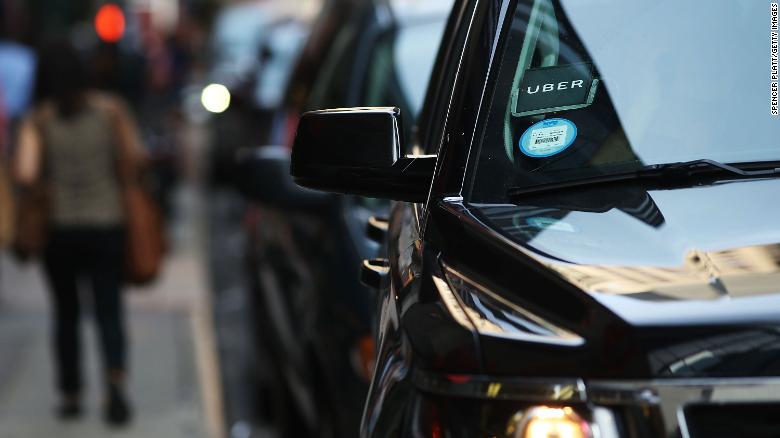
VIDEO NOW PLAYING
Uber CEO: Let's change the system on gig work
In a blow to Uber and Lyft, a California appeals court said Thursday that the companies must reclassify their drivers as employees rather than independent contractors, affirming an earlier court decision.
The ruling marks a significant development in a months-long legal fight between the companies and the state of California, which in May sued Uber and Lyft and claimed they were in violation of state law. It also puts greater pressure on the companies to successfully pass their California ballot measure which seeks to exempt them from the law.
The state has argued that by classifying their drivers as contractors, Uber and Lyft deprive those workers of benefits they are entitled to under a law that took effect January 1. The law, known as Assembly Bill 5, or AB-5, says companies can only treat their workers as independent contractors if those people are free from company control and perform work outside the company's core business.
A reclassification of their workers would represent a radical shift forced on the two businesses, which have built up massive fleets of drivers by treating them as independent contractors and not providing them benefits that they would be entitled to as employees, such as minimum wage, overtime, paid sick leave and unemployment insurance.
In August, a California court ordered Uber and Lyft to reclassify their drivers in the state as employees, delivering a win to the state. At the time, both companies had threatened to shut down if they were forced to reclassify their workers.
The ruling prompted the companies to appeal. But Associate Justice Jon Streeter of the appellate court wrote in his decision Thursday that the injunction restraining Uber and Lyft from classifying their drivers as independent contractors was valid.
"It is broad in scope, no doubt, but so too is the scale of the alleged violations," he wrote.
"Uber and Lyft have used their muscle and clout to resist treating their drivers as workers entitled to those paycheck and benefit protections," Attorney General Xavier Becerra said in a statement after the ruling. "It's time for Uber and Lyft to play by the rules."
The change won't happen immediately. Uber and Lyft still have 30 days to comply with California's law once the appeals process finishes. That clock typically starts 61 days after the appellate court transfers jurisdiction back to the trial court, assuming the opinion is not challenged. It is unclear if Uber and Lyft would appeal Thursday's ruling to the California Supreme Court, though Uber said in a statement to CNN Business that "we're considering our appeal options."
November's election might also make that court process moot. Uber (UBER) and Lyft (LYFT) — along with delivery services that use drivers such as DoorDash, Instacart, and Uber-owned Postmates — have poured $188 million into a California ballot initiative known as Proposition 22 that aims to side-step the AB-5 law.
If Prop. 22 passes, ride-hail and delivery drivers would continue to be treated as independent contractors. There would be some concessions on benefits, including a minimum earnings guarantee based on "engaged time" when a driver is fulfilling a ride or delivery request, but not the time they spend waiting for a gig.
"This ruling makes it more urgent than ever for voters to stand with drivers and vote yes on Prop. 22," Lyft spokesperson Julie Wood said in a statement to CNN Business on Thursday.
Uber also pivoted to the vote on Prop 22 in its statement, saying that if the measure is not passed, "rideshare drivers will be prevented from continuing to work as independent contractors, putting hundreds of thousands of Californians out of work and likely shutting down ridesharing throughout much of the state."
Last month, the CEOs of both companies told the California appeals court that they planned to comply with the law if the lower court's injunction was upheld, and if Prop. 22 fails.
But compliance "would at a minimum require fundamental changes to Uber's platform," wrote Uber CEO Dara Khosrowshahi. He said that the change would "dramatically restrict" the number of drivers Uber could hire, among other moves.
Lyft CEO Logan Green wrote that "such implementation may include ceasing rideshare operations in all or some parts of California."
The ruling marks a significant development in a months-long legal fight between the companies and the state of California, which in May sued Uber and Lyft and claimed they were in violation of state law. It also puts greater pressure on the companies to successfully pass their California ballot measure which seeks to exempt them from the law.
The state has argued that by classifying their drivers as contractors, Uber and Lyft deprive those workers of benefits they are entitled to under a law that took effect January 1. The law, known as Assembly Bill 5, or AB-5, says companies can only treat their workers as independent contractors if those people are free from company control and perform work outside the company's core business.
A reclassification of their workers would represent a radical shift forced on the two businesses, which have built up massive fleets of drivers by treating them as independent contractors and not providing them benefits that they would be entitled to as employees, such as minimum wage, overtime, paid sick leave and unemployment insurance.
In August, a California court ordered Uber and Lyft to reclassify their drivers in the state as employees, delivering a win to the state. At the time, both companies had threatened to shut down if they were forced to reclassify their workers.
The ruling prompted the companies to appeal. But Associate Justice Jon Streeter of the appellate court wrote in his decision Thursday that the injunction restraining Uber and Lyft from classifying their drivers as independent contractors was valid.
"It is broad in scope, no doubt, but so too is the scale of the alleged violations," he wrote.
"Uber and Lyft have used their muscle and clout to resist treating their drivers as workers entitled to those paycheck and benefit protections," Attorney General Xavier Becerra said in a statement after the ruling. "It's time for Uber and Lyft to play by the rules."
The change won't happen immediately. Uber and Lyft still have 30 days to comply with California's law once the appeals process finishes. That clock typically starts 61 days after the appellate court transfers jurisdiction back to the trial court, assuming the opinion is not challenged. It is unclear if Uber and Lyft would appeal Thursday's ruling to the California Supreme Court, though Uber said in a statement to CNN Business that "we're considering our appeal options."
November's election might also make that court process moot. Uber (UBER) and Lyft (LYFT) — along with delivery services that use drivers such as DoorDash, Instacart, and Uber-owned Postmates — have poured $188 million into a California ballot initiative known as Proposition 22 that aims to side-step the AB-5 law.
If Prop. 22 passes, ride-hail and delivery drivers would continue to be treated as independent contractors. There would be some concessions on benefits, including a minimum earnings guarantee based on "engaged time" when a driver is fulfilling a ride or delivery request, but not the time they spend waiting for a gig.
"This ruling makes it more urgent than ever for voters to stand with drivers and vote yes on Prop. 22," Lyft spokesperson Julie Wood said in a statement to CNN Business on Thursday.
Uber also pivoted to the vote on Prop 22 in its statement, saying that if the measure is not passed, "rideshare drivers will be prevented from continuing to work as independent contractors, putting hundreds of thousands of Californians out of work and likely shutting down ridesharing throughout much of the state."
Last month, the CEOs of both companies told the California appeals court that they planned to comply with the law if the lower court's injunction was upheld, and if Prop. 22 fails.
But compliance "would at a minimum require fundamental changes to Uber's platform," wrote Uber CEO Dara Khosrowshahi. He said that the change would "dramatically restrict" the number of drivers Uber could hire, among other moves.
Lyft CEO Logan Green wrote that "such implementation may include ceasing rideshare operations in all or some parts of California."
-- Jill Disis contributed to this report.
Uber drivers sue over alleged 'pressure' to vote, advocate for Prop 22
By Sara Ashley O'Brien, CNN Business
Thu October 22, 2020
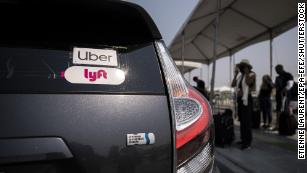
(CNN Business)For months, Uber drivers and passengers in California have received aggressive messaging in support of its controversial ballot initiative, Proposition 22.
Now, some Uber drivers are suing, saying the company has "unlawfully" pressured them and other drivers to support the measure.
California Proposition 22, or Prop 22, seeks to exempt Uber and other gig companies from a state labor law that would require them to classify their drivers as employees.
The class action lawsuit, filed Thursday in a San Francisco Superior Court on behalf of two Uber drivers and two nonprofit organizations, alleges that Uber (UBER) is "exerting extreme and wrongful pressure on its drivers to vote for and advocate for the passage of Proposition 22" through its usage of in-app messaging.
The lawsuit alleges this is in violation of California's Labor Code, which prohibits employers from controlling or directing the political activities of employees or attempting to coerce or influence employees' on engaging in any political action or political activity.
According to the lawsuit, first reported by The Washington Post, Uber forces its drivers to read misinformation about the ballot measure, threatens them with the loss of employment if Prop 22 fails to pass, and pressures drivers to indicate their support of it. In a screenshot included in the complaint, one of the prompts shown to drivers asks them to select "YES ON PROP 22" or "OK."
By Sara Ashley O'Brien, CNN Business
Thu October 22, 2020

(CNN Business)For months, Uber drivers and passengers in California have received aggressive messaging in support of its controversial ballot initiative, Proposition 22.
Now, some Uber drivers are suing, saying the company has "unlawfully" pressured them and other drivers to support the measure.
California Proposition 22, or Prop 22, seeks to exempt Uber and other gig companies from a state labor law that would require them to classify their drivers as employees.
The class action lawsuit, filed Thursday in a San Francisco Superior Court on behalf of two Uber drivers and two nonprofit organizations, alleges that Uber (UBER) is "exerting extreme and wrongful pressure on its drivers to vote for and advocate for the passage of Proposition 22" through its usage of in-app messaging.
The lawsuit alleges this is in violation of California's Labor Code, which prohibits employers from controlling or directing the political activities of employees or attempting to coerce or influence employees' on engaging in any political action or political activity.
According to the lawsuit, first reported by The Washington Post, Uber forces its drivers to read misinformation about the ballot measure, threatens them with the loss of employment if Prop 22 fails to pass, and pressures drivers to indicate their support of it. In a screenshot included in the complaint, one of the prompts shown to drivers asks them to select "YES ON PROP 22" or "OK."
"This pressures drivers to accept Uber's position because it does not provide an option to vote no," the complaint reads.
The $185 million campaign to keep Uber and Lyft drivers as contractors in California
In a statement, an Uber spokesperson said: "This is an absurd lawsuit, without merit, filed solely for press attention and without regard for the facts. It can't distract from the truth: that the vast majority of drivers support Prop 22 and have for months because they know it will improve their lives and protect the way they prefer to work."
The lawsuit is the latest escalation in the fight over Proposition 22 in the country's most populous state. Uber, Lyft, Instacart, DoorDash, and Uber-owned Postmates have put a combined $188 million into passing Prop 22, which aims to allow companies to continue treating ride-hail and delivery drivers as independent contractors with some benefit concessions. For many weeks, Californians have been inundated with television and social media ads, email blasts, and push notifications from the Yes campaign and the gig companies about the measure.
If Prop 22 fails to pass, workers would likely be considered employees who are entitled to a minimum wage, overtime pay, workers' compensation, unemployment insurance and paid sick leave under Assembly Bill 5, a state labor law that went into effect in January.
In May, the California Attorney General and a coalition of city attorneys sued Uber and Lyft accusing them of misclassifying drivers as independent contractors and depriving them of protections they would be entitled to as employees. An Uber spokesperson said in a statement at the time that it plans to "contest this action in court." A Lyft spokesperson said it is "looking forward to working with the Attorney General and mayors across the state to bring all the benefits of California's innovation economy to as many workers as possible."
David McCuan, a political science professor at Sonoma State University, told CNN Business that the lawsuit is an "indication of the strategies that will be used by the opponents of Prop. 22."
"It is not about going to war dollar for dollar," said McCuan, of the opposition, backed by labor and union organizations, which has put just roughly $15 million behind its fight to date. "It's about being strategic on how to legally challenge and set the ground for what eventually will be a broader legal battle if the ballot passes."
McCuan said that if it does pass, the battle won't end on November 3."The legal wrangling around this is just beginning," he added.
The drivers, who are being represented by Rudy, Exelrod, Zieff & Lowe and nonprofit Legal Aid at Work, are seeking an injunction, an order that Uber is violating the law, and penalties under the Private Attorney General Act, which could amount to $200 million, with 75% going to the State of California.
In a statement, an Uber spokesperson said: "This is an absurd lawsuit, without merit, filed solely for press attention and without regard for the facts. It can't distract from the truth: that the vast majority of drivers support Prop 22 and have for months because they know it will improve their lives and protect the way they prefer to work."
The lawsuit is the latest escalation in the fight over Proposition 22 in the country's most populous state. Uber, Lyft, Instacart, DoorDash, and Uber-owned Postmates have put a combined $188 million into passing Prop 22, which aims to allow companies to continue treating ride-hail and delivery drivers as independent contractors with some benefit concessions. For many weeks, Californians have been inundated with television and social media ads, email blasts, and push notifications from the Yes campaign and the gig companies about the measure.
If Prop 22 fails to pass, workers would likely be considered employees who are entitled to a minimum wage, overtime pay, workers' compensation, unemployment insurance and paid sick leave under Assembly Bill 5, a state labor law that went into effect in January.
In May, the California Attorney General and a coalition of city attorneys sued Uber and Lyft accusing them of misclassifying drivers as independent contractors and depriving them of protections they would be entitled to as employees. An Uber spokesperson said in a statement at the time that it plans to "contest this action in court." A Lyft spokesperson said it is "looking forward to working with the Attorney General and mayors across the state to bring all the benefits of California's innovation economy to as many workers as possible."
David McCuan, a political science professor at Sonoma State University, told CNN Business that the lawsuit is an "indication of the strategies that will be used by the opponents of Prop. 22."
"It is not about going to war dollar for dollar," said McCuan, of the opposition, backed by labor and union organizations, which has put just roughly $15 million behind its fight to date. "It's about being strategic on how to legally challenge and set the ground for what eventually will be a broader legal battle if the ballot passes."
McCuan said that if it does pass, the battle won't end on November 3."The legal wrangling around this is just beginning," he added.
The drivers, who are being represented by Rudy, Exelrod, Zieff & Lowe and nonprofit Legal Aid at Work, are seeking an injunction, an order that Uber is violating the law, and penalties under the Private Attorney General Act, which could amount to $200 million, with 75% going to the State of California.



